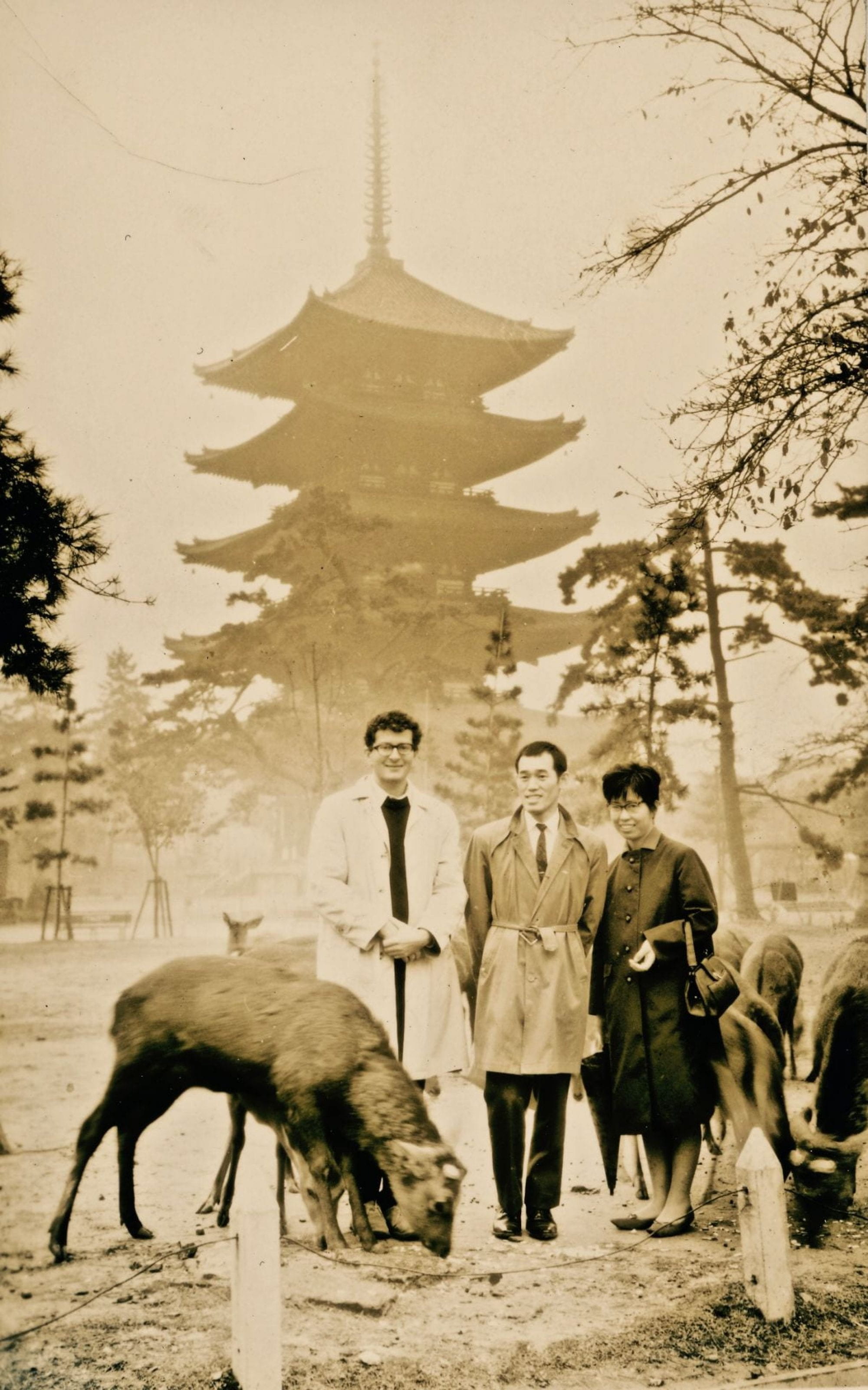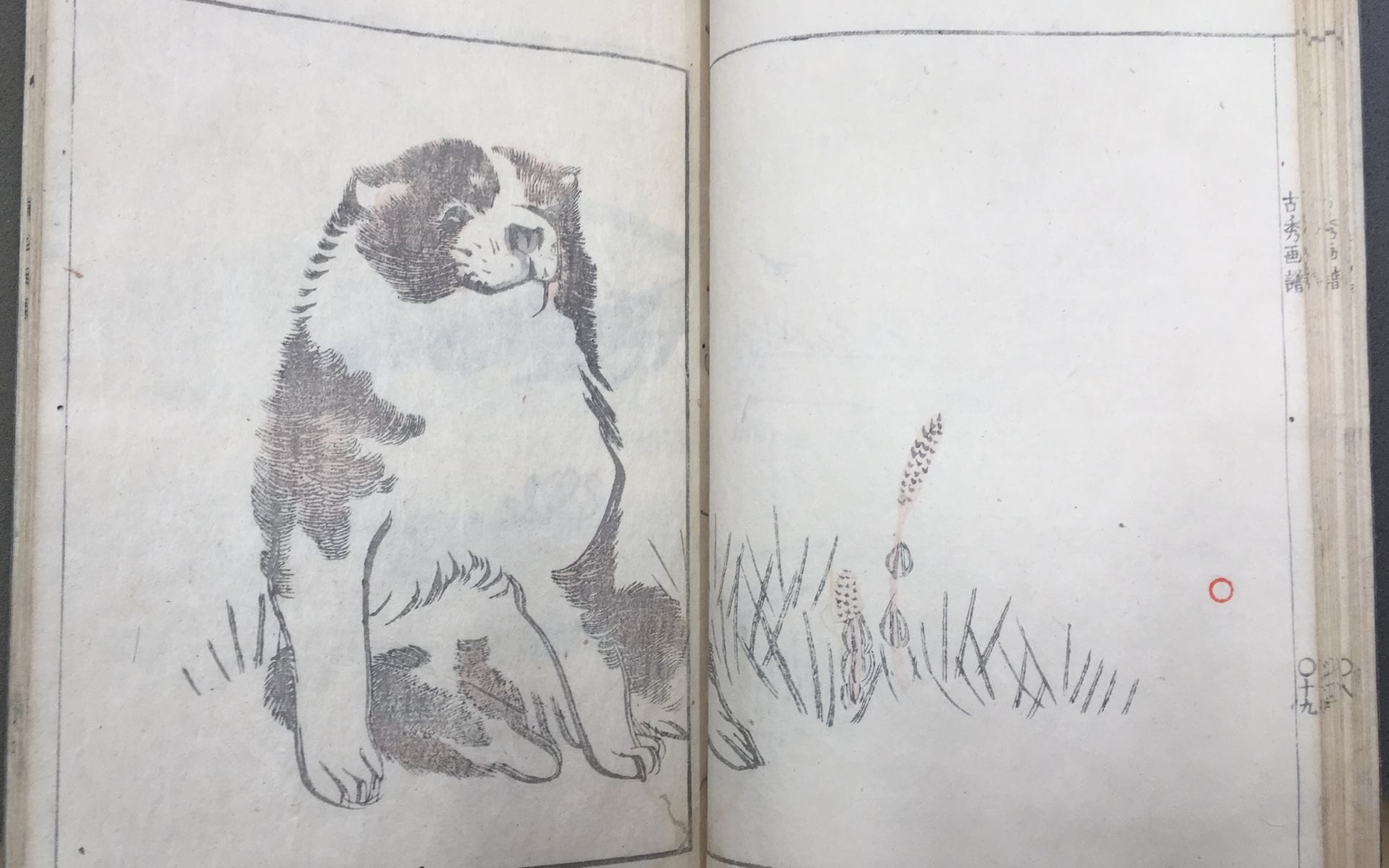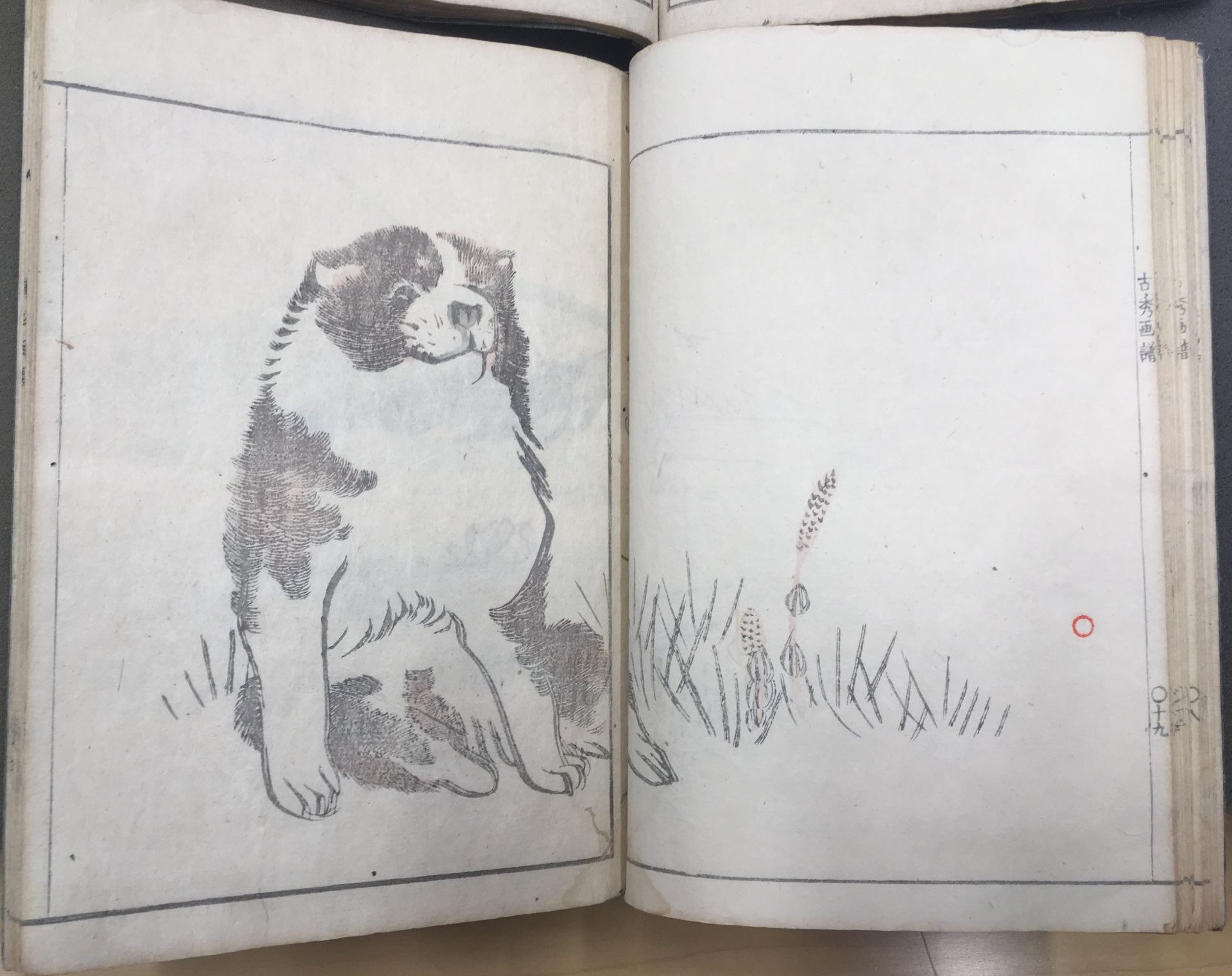Artist: Hatta Koshū 八田古秀 (Japanese, 1770-1822)
Title: Koshū gafu 古秀画譜
Date: 1824 (Bunsei 7)
Medium: Woodblock print, 25.65 x 17.9cm
Publisher: Kyoto: Yoshida Shinbē
Gift of Arthur Tress, Arthur Tress Collection of Japanese Illustrated Books, Box 8, Item 16
Koshū gafu, which translates to “Koshū’s Album,” is a collection of thirty prints illustrated by Koshū Hatta, a painter who studied directly with Maruyama Ōkyo, now regarded as one of the founding figures of the Maruyama-Shijō style. Hatta’s illustrations exhibit the naturalism promoted in the style: the dynamism of people in motion or birds in flight; the fine strokes of an animal’s fur; the reserved but pointed deployment of colors in swatches to connote vast spaces like the sky and the ocean. In these ways Koshū gafu is filled a selection of intimate portrayals of humans, animals, and landscapes alike. Treating animals and landscapes with the same dignity as one would give to a person, Hatta regards his subjects with a tone of reverence. Some animals and plants are zoomed in and painted in larger proportions than our normal perception of them, while in several landscape illustrations we find a small, lone human figure, made to emphasize the vastness of the landscape in which they are depicted, intimating notions of the sublime. That a publisher was willing to give Hatta the space of a selected collection, or gafu, testifies to his appeal and prestige at the time, though Hatta’s artistic style certainly extends beyond the confines of a thirty-work collection. His hanging scroll illustration “Seiobo And Sennin,” a more formally representational work, is currently in the Museum of Fine Arts Boston.
According to the British Museum, Koshū gafu was first published in 1812, and it was reissued in 1814 and 1824. This signals its great popularity among readers. Arthur Tress’s collection includes two copies of Koshū gafu from the 1824 reissue, in different stages of wear (see Box 8, item 8 for the other copy). Both copies have the original cover with repeating octagonal patterns, though the copy exhibited is at a generally better condition, preserving more of the original colors. The copy featured here also includes what appear to be stamps of small, red circles on every illustration, either at the lower left-hand or lower right-hand side, circles which do not appear in the other copy. The exact purpose of these red circles is unknown, though they are not an uncommon appearance in other Japanese illustrated books of the time.
Other copies of Koshū gafu can be found at the British Museum (1812 edition), the Boston Book Company (presumed 1812 edition), and the Pulverer Collection (1812 edition).
Selected Readings
Jack Hillier, The Art of the Japanese Book (London: Philip Wilson Publishers Ltd., 1987).
Jack Hillier, The Uninhibited Brush: Japanese Art in the Shijō Style (Hugh M. Moss Ltd., 1974).
Posted by Kelly Liu, Autumn 2019


